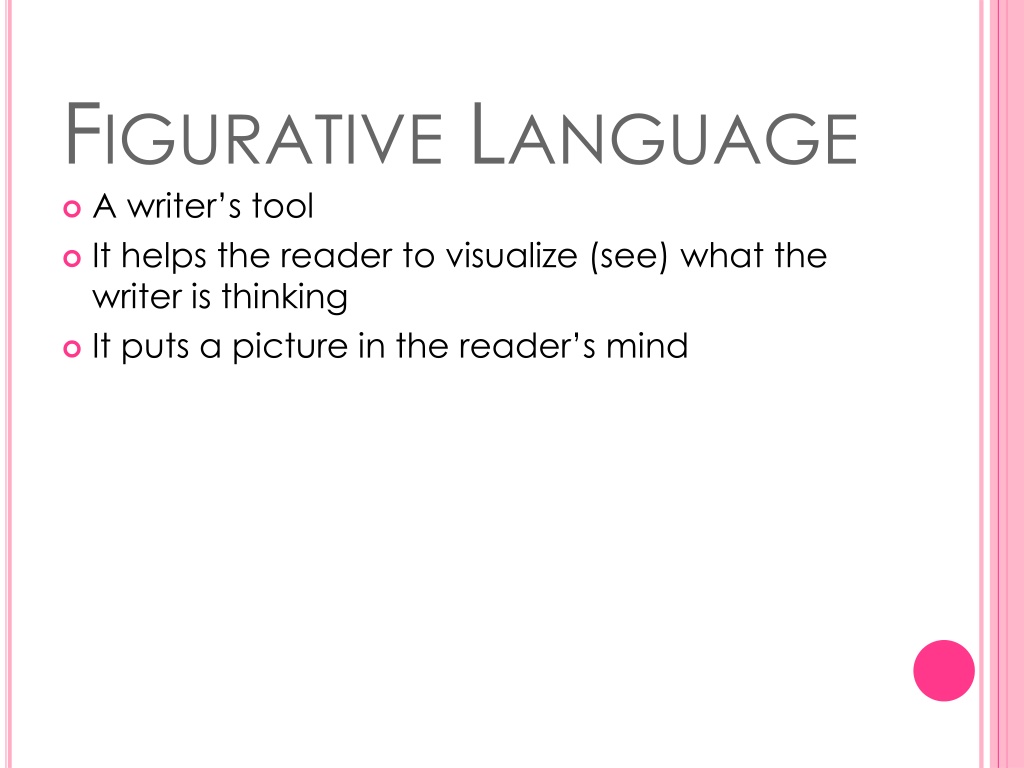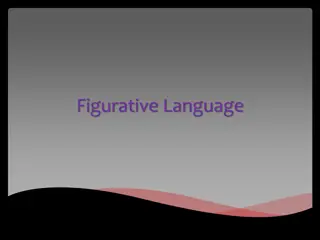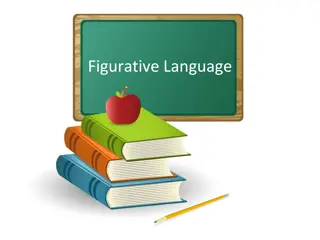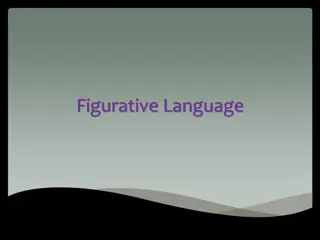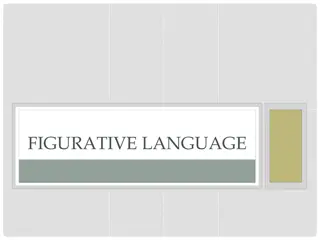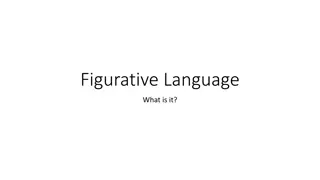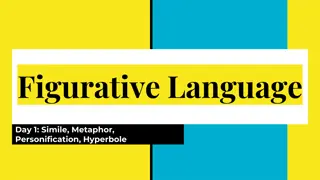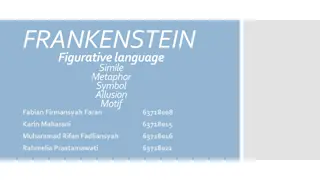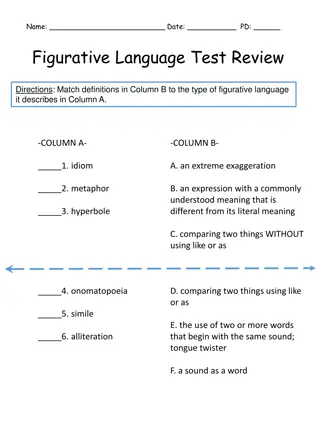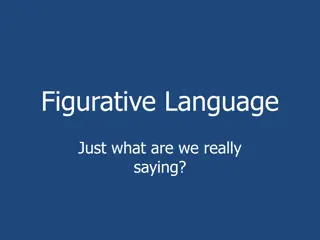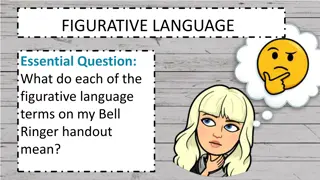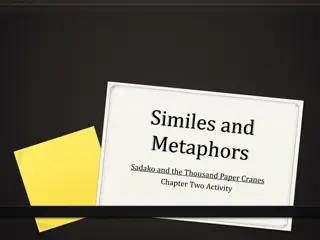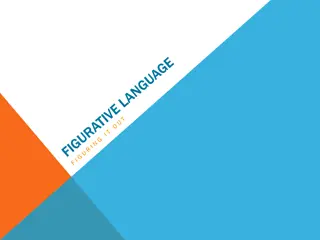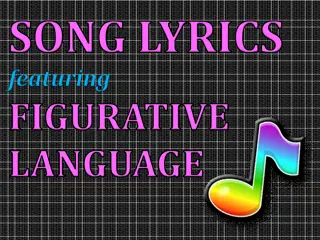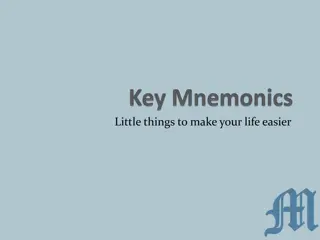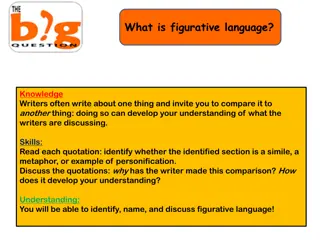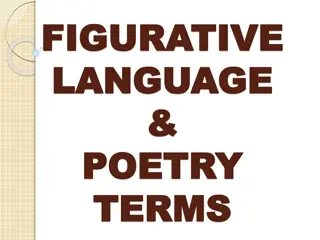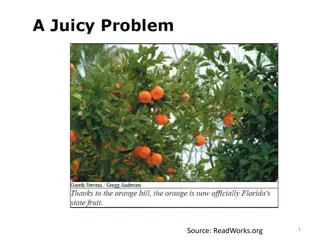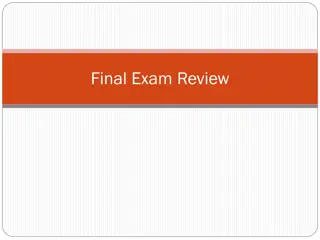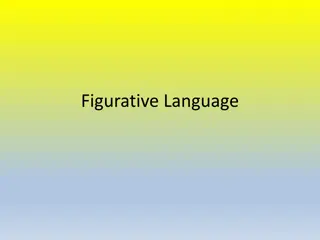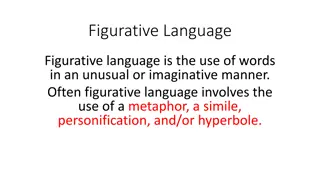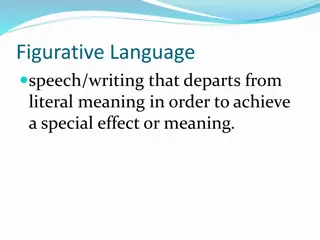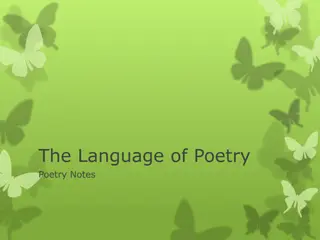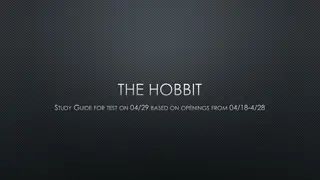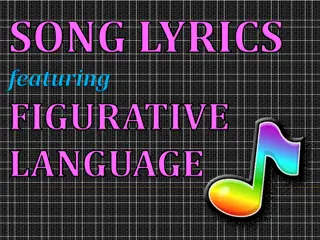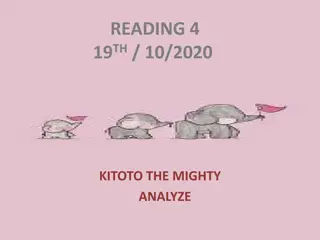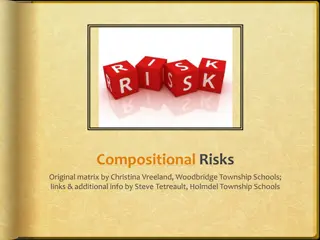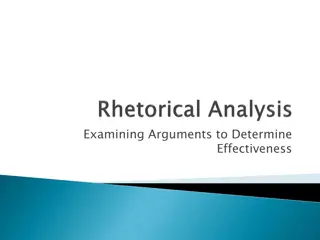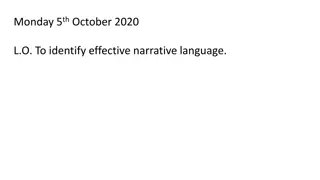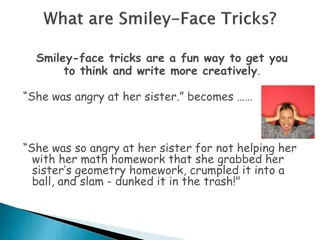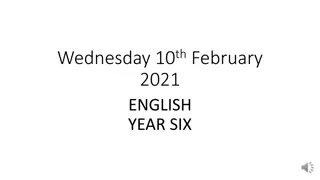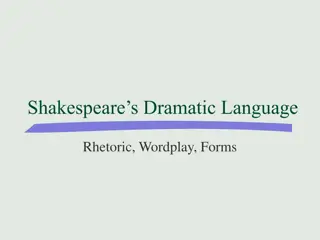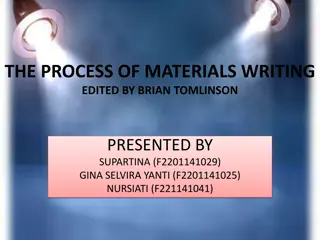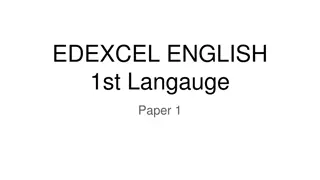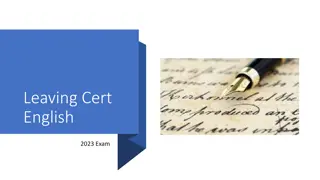Understanding Figurative Language in Writing
Figurative language is a powerful tool that writers use to enhance their work by creating vivid images in the reader's mind. This includes techniques such as similes, puns, oxymorons, allusions, foreshadowing, and paradoxes, each serving a unique purpose in conveying deeper meanings and engaging the audience. Through examples and explanations, writers can effectively communicate their ideas with creativity and impact.
Download Presentation

Please find below an Image/Link to download the presentation.
The content on the website is provided AS IS for your information and personal use only. It may not be sold, licensed, or shared on other websites without obtaining consent from the author. Download presentation by click this link. If you encounter any issues during the download, it is possible that the publisher has removed the file from their server.
E N D
Presentation Transcript
FIGURATIVE LANGUAGE A writer s tool It helps the reader to visualize (see) what the writer is thinking It puts a picture in the reader s mind
PUN Humorous use of a word with two or more possible meanings Examples: I ve got your pack way back! The best way to communicate with a fish is to drop them a line. A horse is a very stable animal.
OXYMORON Figure of speech in which opposites are combined Examples Jumbo shrimp Living dead Pretty ugly
SIMILE A simile is used to compare two things It uses the words like or as to make comparisons. Examples: Krissy is as pretty as a picture. Her hair shines like the sun. Her eyes sparkle like the stars in the sky.
ALLUSION A reference to a person, place, or event in past history, religion, mythology, or literature. Examples: If it keeps raining like this, we may have to build an ark. You are going down like the Titanic. My mom is so strict. She s like Hitler.
FORESHADOWING Hints of something later to come Examples: A gun is a sign of upcoming events. Sometimes it will be hidden in a drawer or glove compartment. Worry or apprehension of a character also foreshadows. This may be shown with facial expressions, gestures, or words. At this point the readers don t know what is wrong, but they anticipate finding out. A character s thoughts can foreshadow. For example, I told myself this is the end of my trouble, but I didn t believe myself.
PARADOX A statement which seems to be contradictory but is really logical. Examples: Nobody goes to that restaurant because it is too crowded. The beginning of the end Bittersweet
HYPERBOLE A figure of speech which is an exaggeration Often confused with a simile or a metaphor because it often compares two objects Examples His feet were as big as a barge. She talks a million miles per hour. She had to walk across the world to get to the stadium.
PERSONIFICATION Giving human traits (qualities, feelings, action, or characteristics) to non-living objects (things, colors, qualities, or ideas) Examples The window winked at me. The run down house appeared depressed. The waffle jumped out of the toaster.
METAPHOR A metaphor is used to compare two things Instead of saying something is like or as --- a metaphor states that it just IS. Examples John s mind is a computer. My mom is a workhorse. Bob is a snake in the grass.
ONOMATOPOEIA A word that imitates the sound it represents The sounds literally make the meaning of the word
ONOMATOPOEIA EXAMPLES Buzz -in reference to a bee Tick -in reference to a clock Purr -in reference to a cat
ALLITERATION The occurrence of the same letter or sound at the beginning of adjacent or closely connected words.
ALLITERATION EXAMPLES Sally sells sea shells by the seashore. The sentence has the same letter and sound repeated more than two times.
